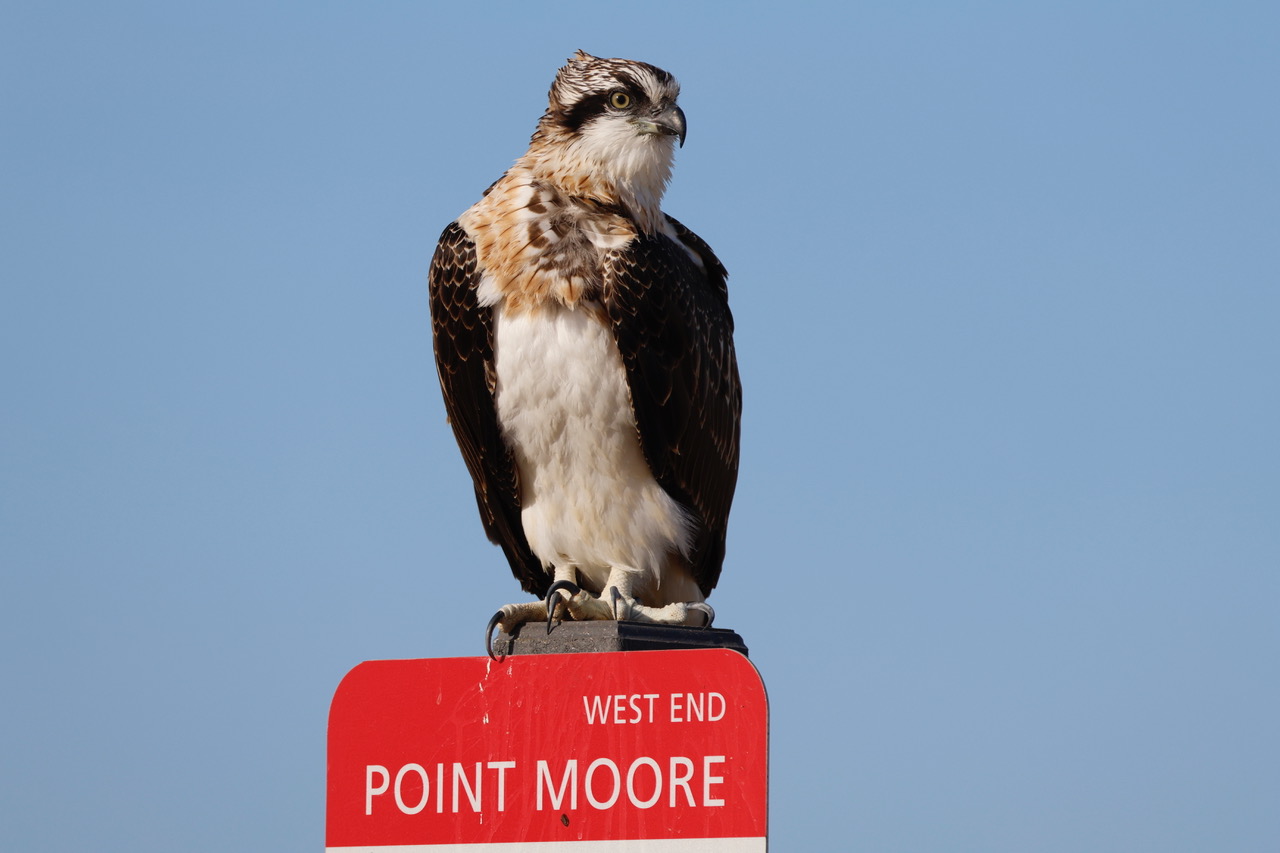Ospreys of the Geraldton region
Did you know that the Geraldton region has its own resident population of Osprey (Pandion haliaetus)?
Osprey reside around the entire Australian mainland coastline, however, they are also found across the world, on all continents except Antarctica. The Osprey is the second most widely distributed raptor (bird of prey) species worldwide, second only to the Peregrine Falcon.
The Osprey’s diet consists almost exclusively of fish (piscivorous) hence their nick name “fish hawk” and inhabit locations near water bodies, both coastal and wetlands/riverine environments very close to their food source. In Australia, the Osprey is mostly sedentary (i.e. does not migrate) so you are very likely to have the pleasure of viewing these amazing birds along our coastline.
Ospreys build large nests constructed of collected materials such as branches, twigs, seaweed and even fishing rope, building elaborate nests in trees, rocky outcrops, even on utility poles and transmission towers. Here along the WA coastline, we are very lucky to have Ospreys that have constructed nests on man-made platforms, all ready to move in and have babies! Unfortunately, their nest building behaviour can sometimes be detrimental to the safety of the young, as adults forage for nest building material which sometimes consists of items such as discarded fishing rope, line, and plastics – all items that can lead to entanglement for the young and adult Osprey. See more details here:
Breeding
Ospreys usually mate for life and reach sexual maturity around three to four years of age. Osprey pairs breed yearly, preparing their nest for the new arrivals by collecting sticks, seaweed and whatever else they think they need. Breeding involves an elaborate aerial courtship and constant mating. If successful, incubation of eggs takes around 35-40 days; once hatched, it takes around 50-60 days before the chicks fly the nest. Once the chicks are born the female spends the majority of her time on the nest, assisted by her mate catching and bringing fish back to the nest so she can feed the young ones.

Osprey young in nest (photo courtesy of Steve Pidgeon)
Some interesting Osprey facts
- Osprey have been recorded living to 24 years (from banding records). Average lifespan is 8 - 10 years.
- The female is bigger than the male and can be distinguished by her large chestnut coloured breast band. The male breast band is almost absent.
- The juveniles carry their distinctive plumage to about 12-18 months old and have orange eyes. Adults have yellow eyes.
- Juveniles have a dense chest band markings and cinnamon orange colouring. Wings have white rimmed feathers and orange wash on under wing. The crown of a juvenile is heavily striped.
- Indigenous names for the Osprey include Doorn-doorn (Djiraly) or Yoon-door-doo (Noongar) or Weel-bra (North-West Cape).
- Indigenous people also believe the Osprey are tied to the air and earth elements.
Photos left to right: Aerial battle between young, Osprey juvenile, Osprey feeding (photos courtesy of Heather Beswick)
Point Moore Ospreys

Photo courtesy of Heather Beswick
Point Moore is home to its own resident Osprey pair. You can often see them flying around hunting and feeding, and during the breeding season, sitting on their constructed nest pole. The City installed poles at Point Moore in collaboration with Western Power (who donated the pole) and Point Moore locals. The current nest pole was erected in in 2003, with the first young born in 2004.
2022 was a bumper year for the Osprey pair, successfully raising three female chicks. In 2023 they reared two chicks, much less stressful for Mum and Dad! The nesting pair have a regular following of locals and visitors, with keen volunteers observing their daily habits.
We encourage locals and visitors to view the Ospreys, and respect their natural behaviour through:
- Viewing from a safe distance, do not approach the nesting pole.
- Not flying drones near the nesting pole or birds.
- Avoiding driving off-road vehicles near the nesting pole.
- Taking home any rubbish from the beach, and disposing of any fishing gear including ropes, tackle and line responsibly.
Acknowledgements
We would like to thank Heather Beswick and Steve Pidgeon from Birdlife Geraldton and Midwest, and Marcus Singor, Birdlife Western Australia for their valuable input.
References:
Atlas of Living Australia. Pandion haliaetus. www.ala.org.au